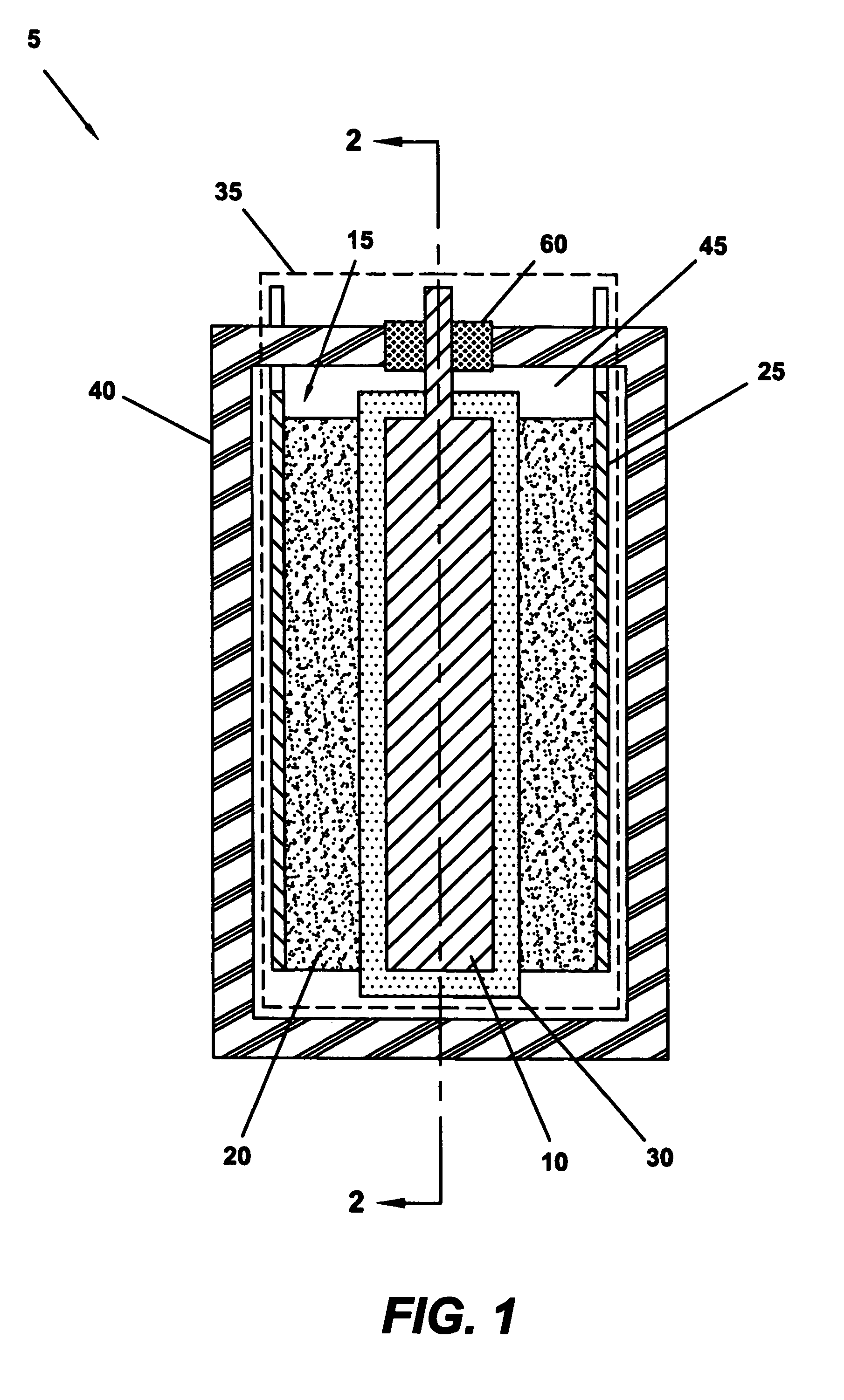Heterogeneous electrochemical supercapacitor and method of manufacture
a supercapacitor and electrochemical technology, applied in the direction of wound capacitors, electrochemical generators, fixed capacitors, etc., can solve the problems of high materials cost, disadvantages of many of the known electrochemical capacitor designs, and inability to meet the requirements of high-efficiency production, and achieve high specific power characteristics , the effect of reducing production costs
- Summary
- Abstract
- Description
- Claims
- Application Information
AI Technical Summary
Benefits of technology
Problems solved by technology
Method used
Image
Examples
example 1
[0041]A multi-cell HES having 7 positive and 8 negative electrodes was assembled in a case. The positive and negative electrodes were separated by a porous separator. The positive electrodes were formed from a mixture of Pb, Pb3O4, and PbO powders that was made into a paste and introduced to a grid of lead and antimony (5%) alloy. The active mass of the negative electrodes was manufactured from an activated carbon material, as described above, and attached to a current collector comprised of lead and tin (3%) alloy. Both the positive and negative electrodes were formed in the shape of flat plates for insertion into a case. The cells were filled with an aqueous sulfuric acid electrolyte, and the case was sealed.
example 2
[0042]A multi-cell HES having 7 positive and 8 negative electrodes was assembled in a case. The positive and negative electrodes were separated by a porous separator. The positive electrodes were formed from a mixture of Pb, Pb3O4, and PbO powders that was doped with admixtures of Ti7O13 and Ti8O15 in a weight ratio of 85%:15%, respectively. The mixture was made into a paste, and was introduced to a grid of lead and antimony (5%) alloy. The active mass of the negative electrodes was manufactured from an activated carbon material, as described above, and attached to a current collector comprised of lead and tin (3%) alloy. Both the positive and negative electrodes were formed in the shape of flat plates for insertion into a case. Once cell assembly was complete, the cells were filled with an aqueous sulfuric acid electrolyte. After a soaking period, the positive electrodes were subjected to the forming process.
example 3
[0043]A multi-cell HES having 7 positive and 8 negative electrodes was assembled in a case. The positive and negative electrodes were separated by a porous separator. In one variation, the positive electrodes were formed from a mixture of Pb, Pb3O4, and PbO powders that was doped with a bismuth (Bi2O3) powder during paste preparation. In another variation, the positive electrodes were formed by soaking PbO with an acetone solution of bismuth nitrate (Bi(NO3)3 .5H2O). A Pb3O4 powder was then obtained from the mixture and used to form a paste. In both variations, the paste was introduced to a grid of lead and antimony (5%) alloy. The active mass of the negative electrodes was manufactured from an activated carbon material, as described above, and attached to a current collector comprised of lead and tin (3%) alloy. Both the positive and negative electrodes were formed in the shape of flat plates for insertion into a case. Once cell assembly was complete, the cells were filled with an ...
PUM
 Login to View More
Login to View More Abstract
Description
Claims
Application Information
 Login to View More
Login to View More - R&D
- Intellectual Property
- Life Sciences
- Materials
- Tech Scout
- Unparalleled Data Quality
- Higher Quality Content
- 60% Fewer Hallucinations
Browse by: Latest US Patents, China's latest patents, Technical Efficacy Thesaurus, Application Domain, Technology Topic, Popular Technical Reports.
© 2025 PatSnap. All rights reserved.Legal|Privacy policy|Modern Slavery Act Transparency Statement|Sitemap|About US| Contact US: help@patsnap.com



